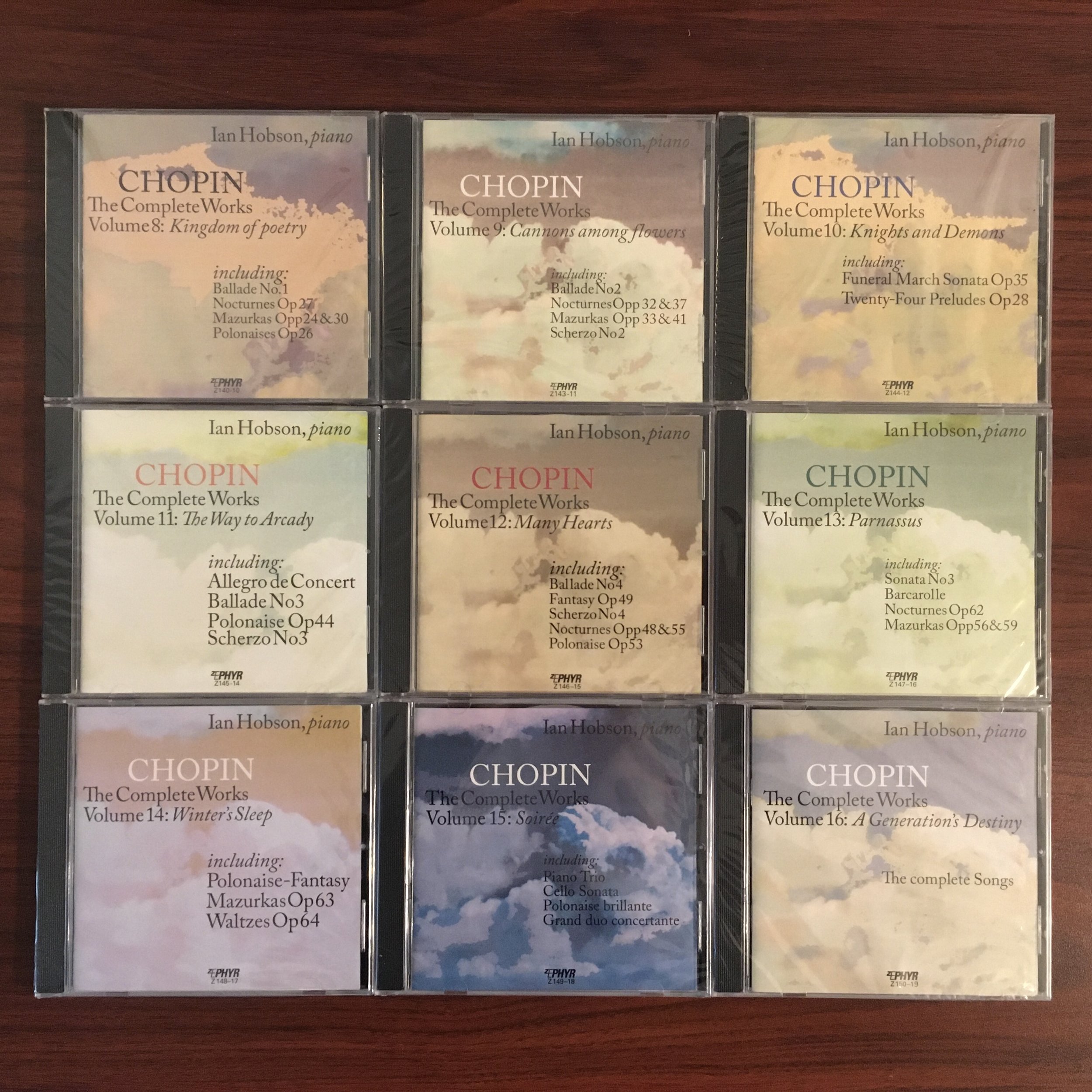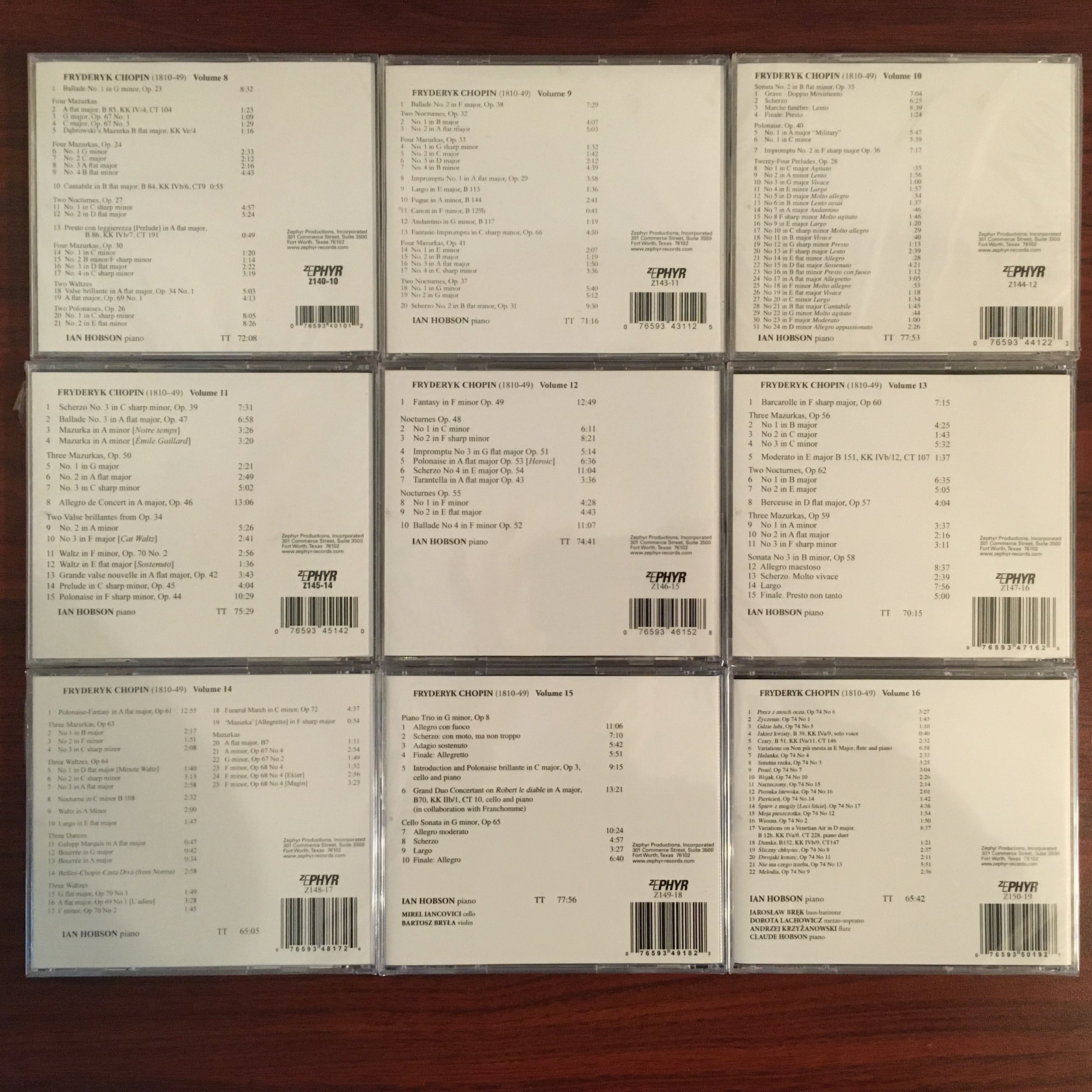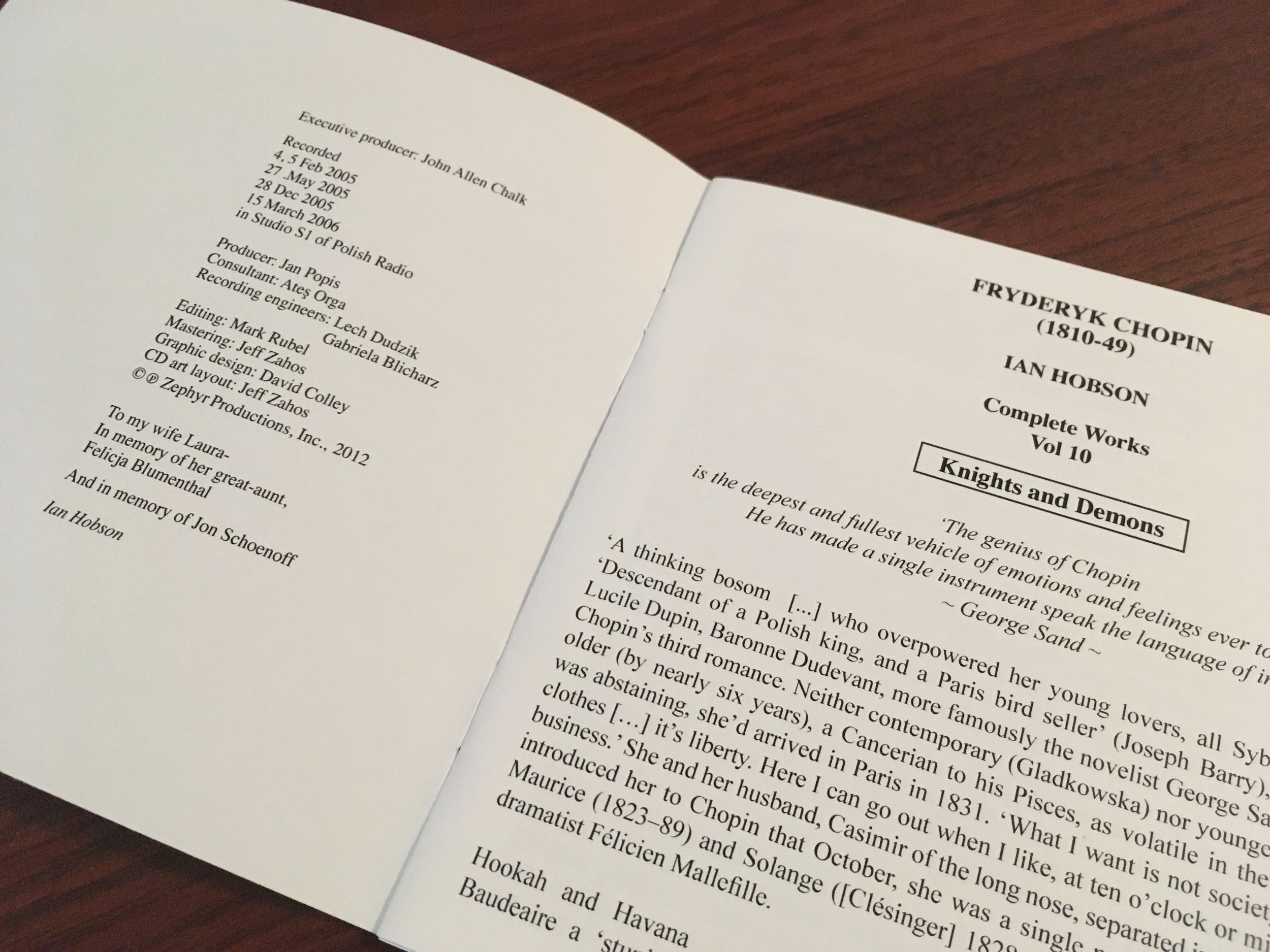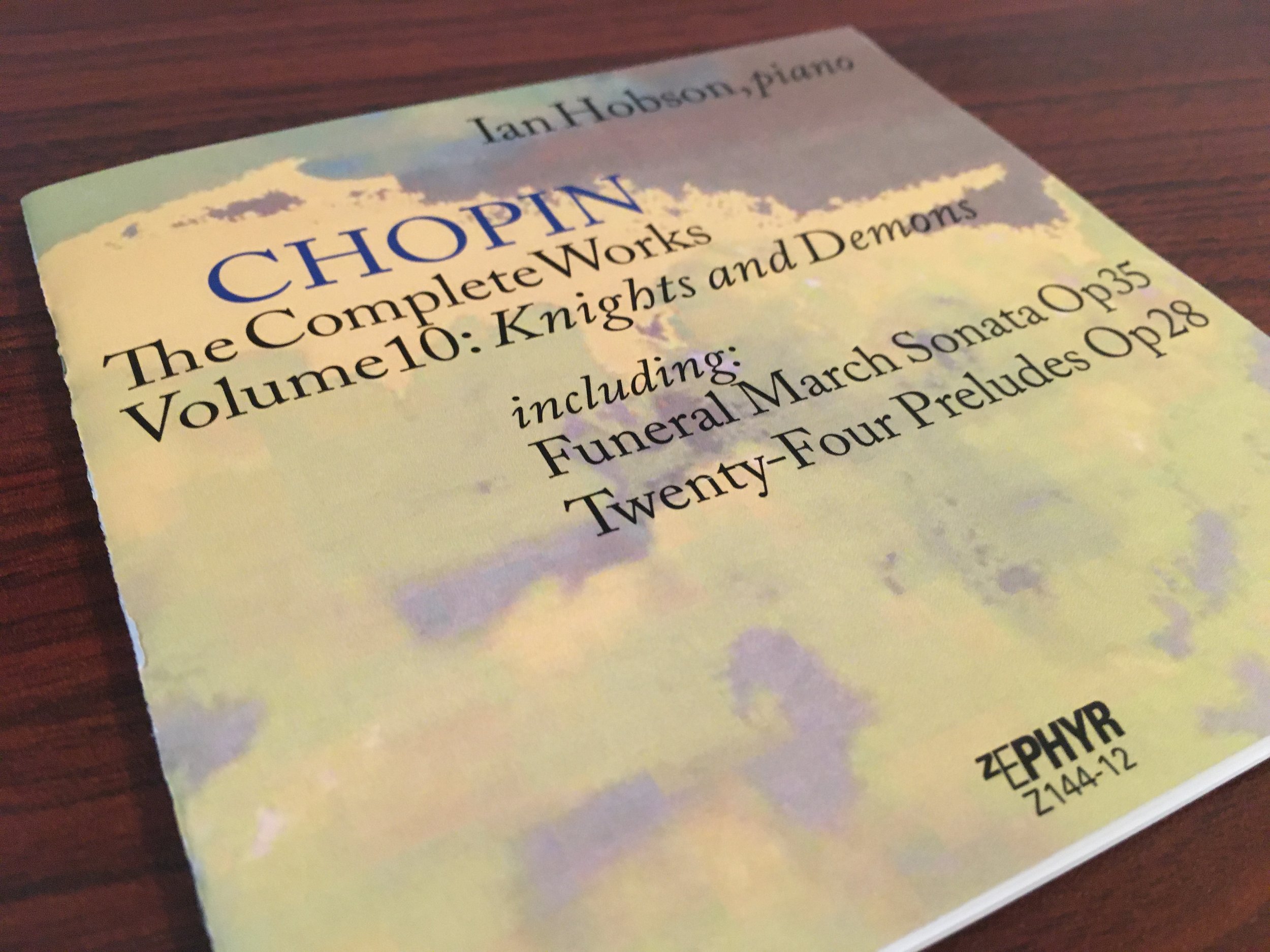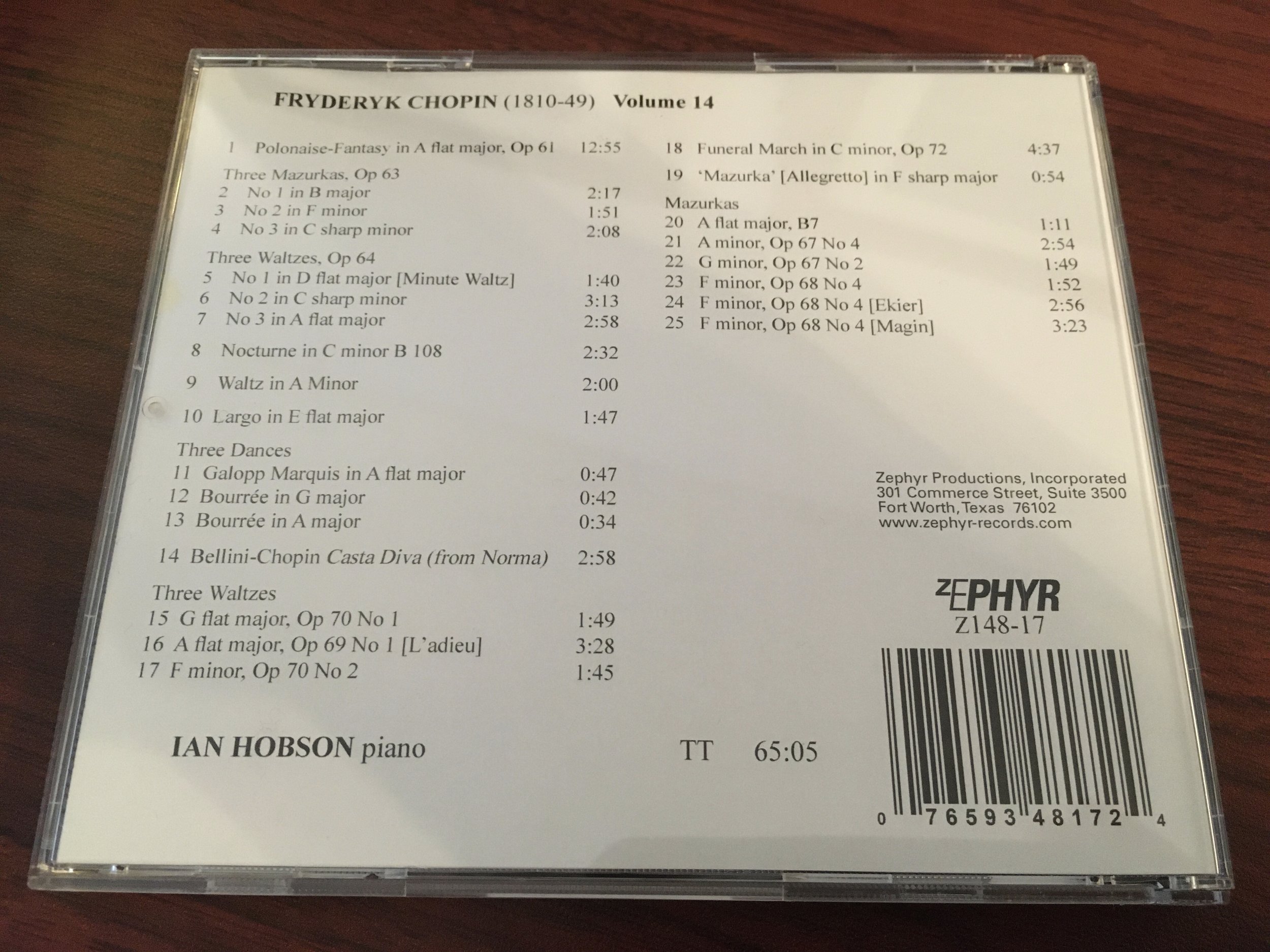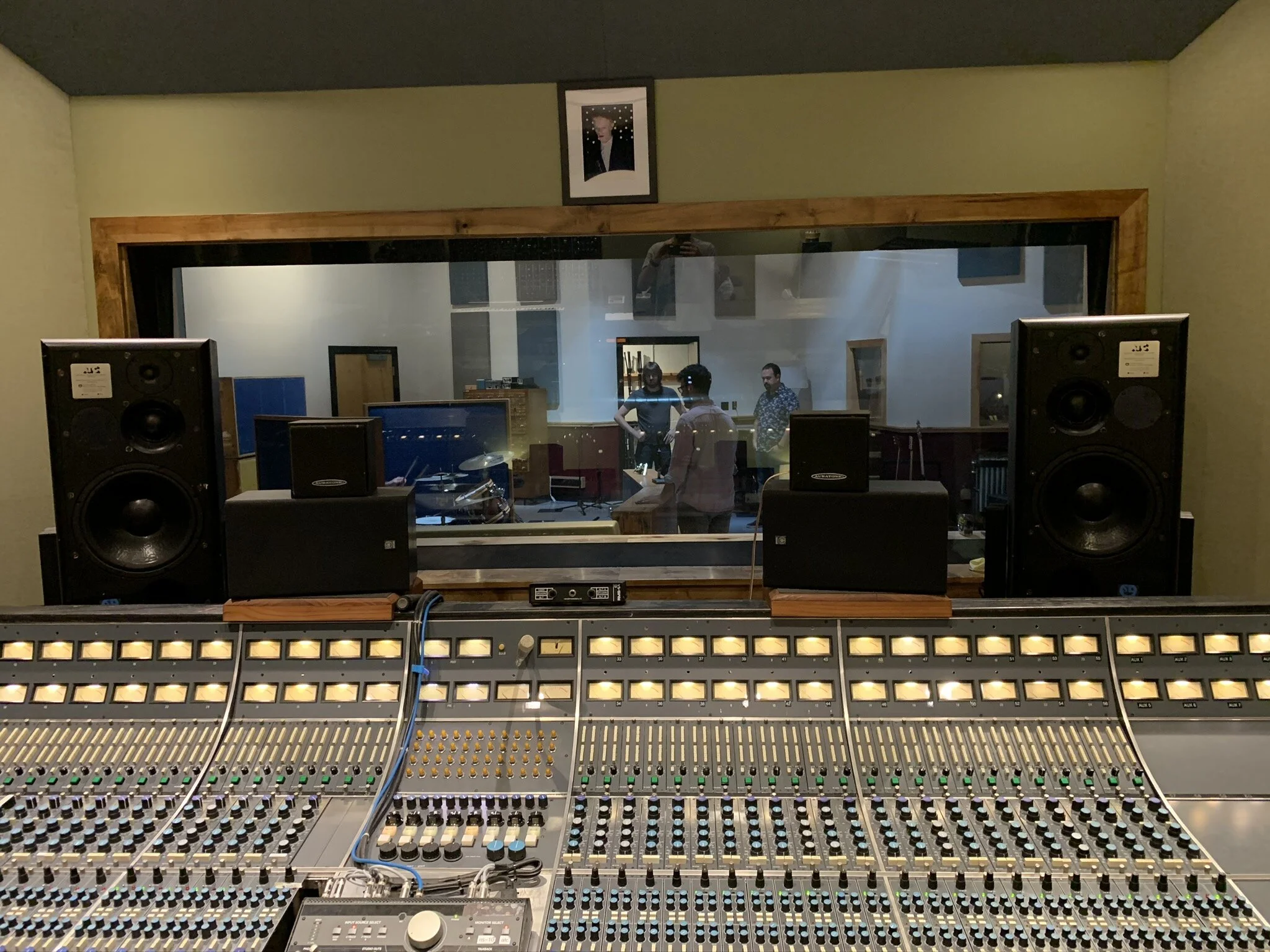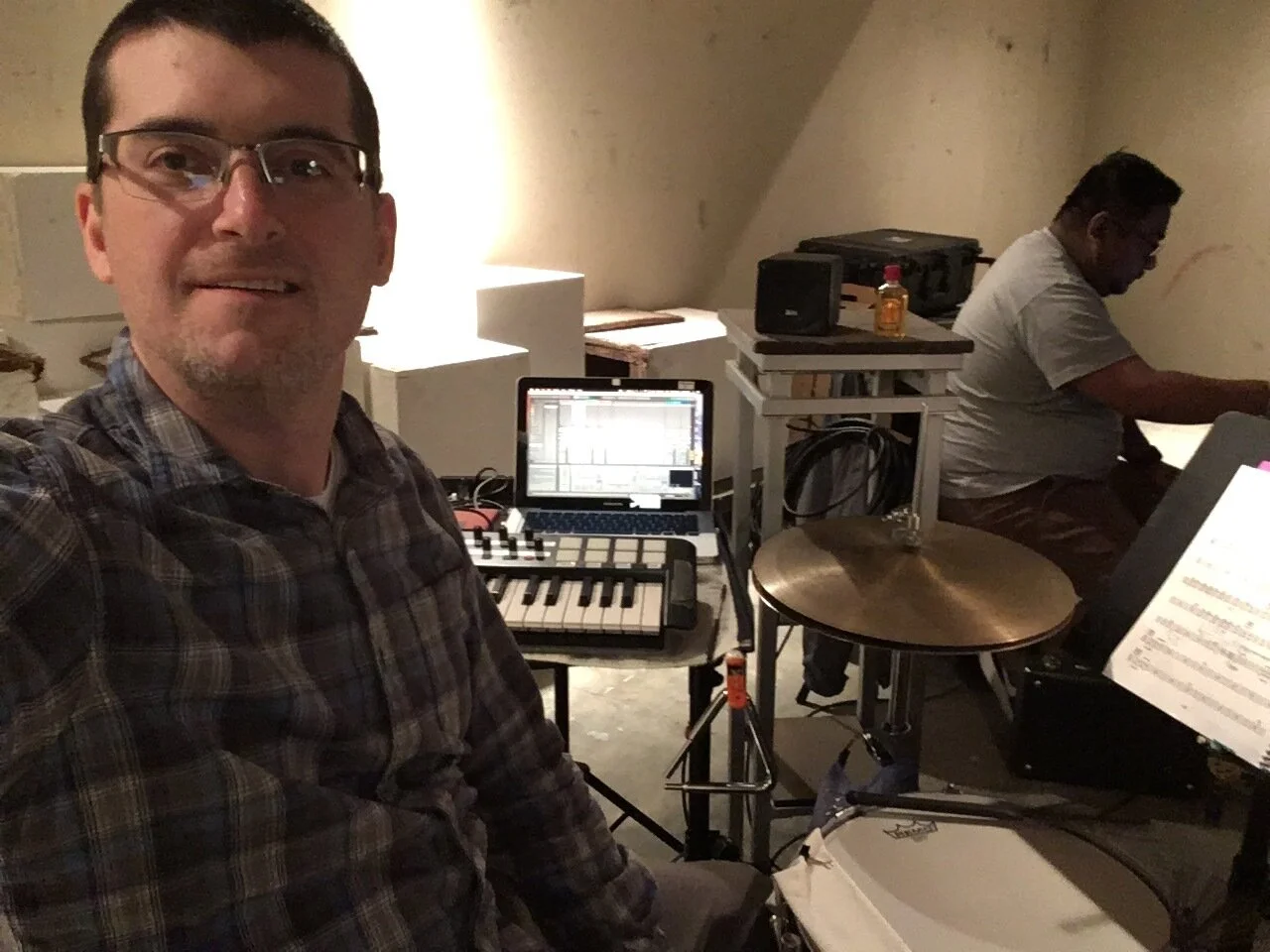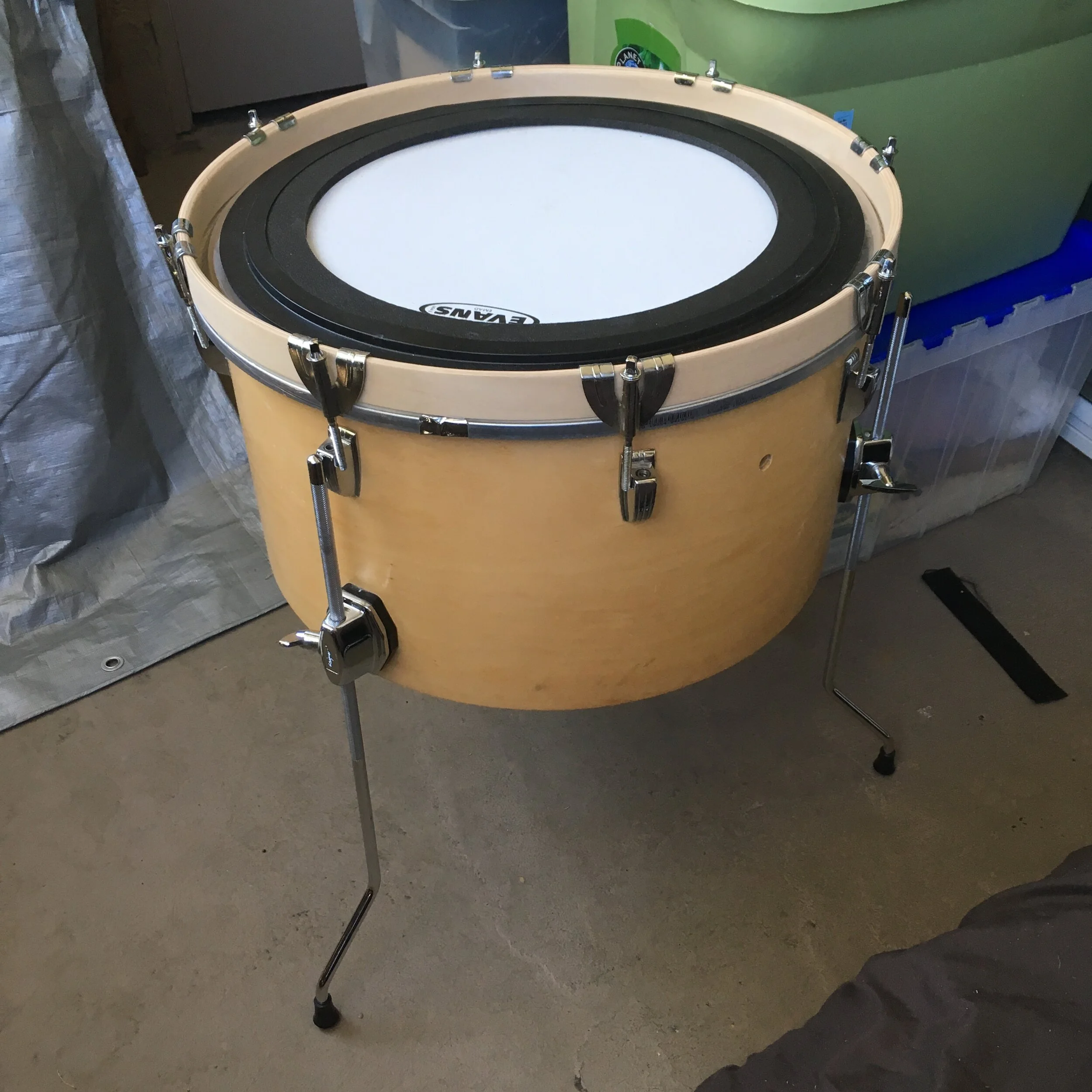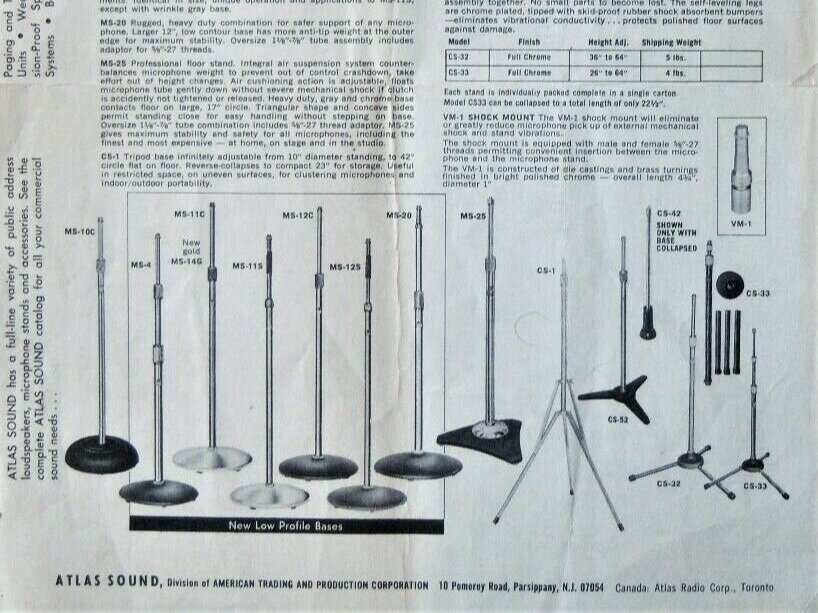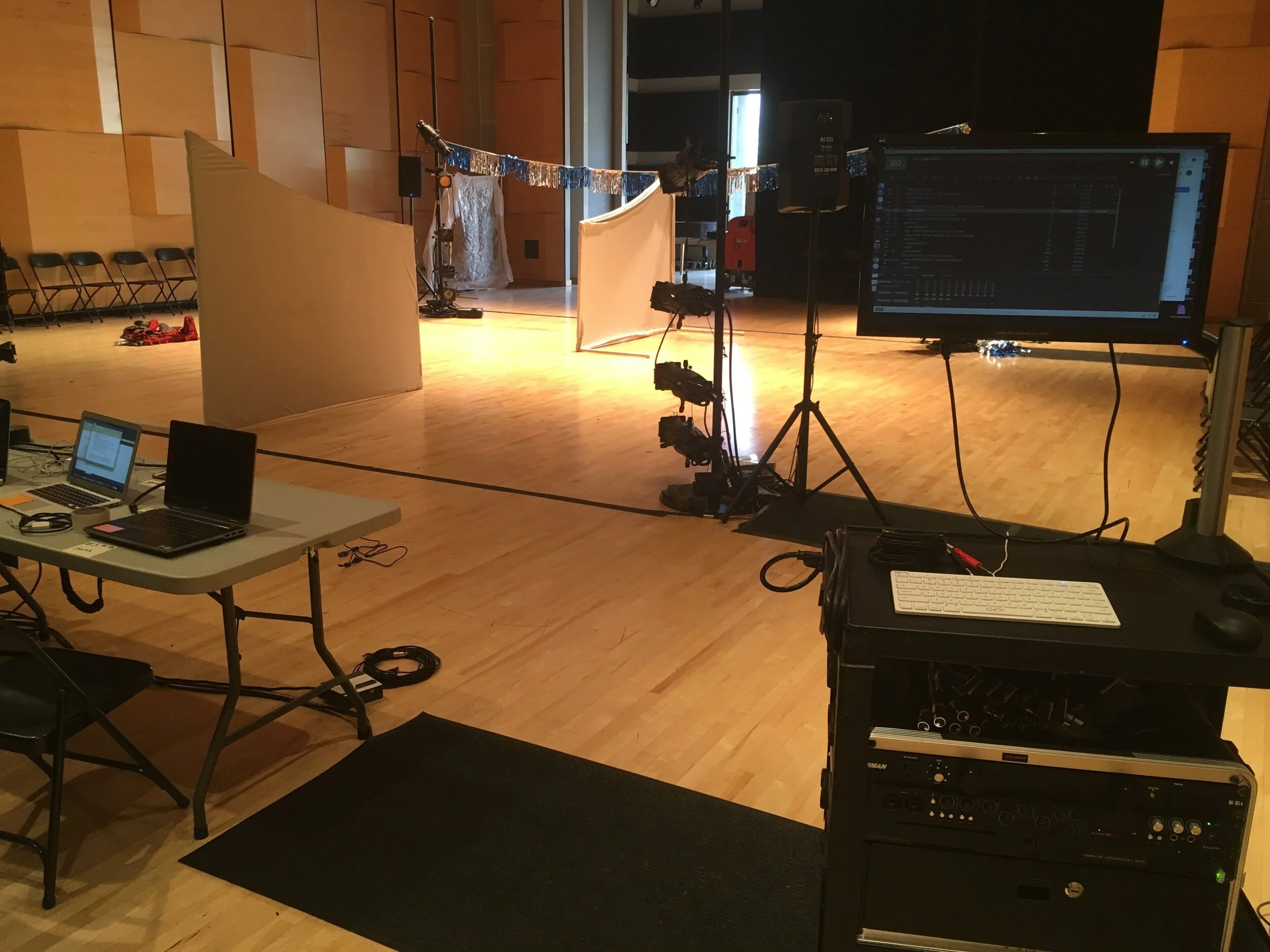Dance musicians should lead the way to the future of dance/music collaboration.
What I Do and Why
Thank you, Mark Rubel
Playing Drums With Droneyard
Making Effective "Click" Tracks
Rules for Collaboration
The Complete Piano Works of Frederic Chopin
From 2010 to 2019, I worked with virtuoso pianist Ian Hobson and producer Samir Golescu to release recordings of every piece of Chopin’s piano music. It took the form of a 16-disc set containing on Hobson’s Zephyr record label, and I worked on volumes eight through sixteen.
This project evokes pride and a bit of sadness for me - I inherited it from Jon Schoenoff following his untimely death in 2010. Jon was a mentor to me in classical/acoustic music recording and production. The recordings had all been previously completed on DAT tapes in Warsaw, Poland. I did a few things on this project:
Audio - I transferred the audio to hard disk and edited takes in to complete movements.
Art/text layout - Placed designer David Colley’s cover art, formatted scholar Ates Orga’s liner notes, created and track information, logos, and barcodes. Overall, a lot of work went in to consistency and coherency within each volume and between volumes. This was especially challenging because the discs were released over several years.
You can listen HERE







